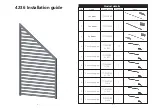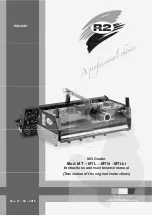
The quality of the power supplied to your Saturn GC/MS is very important. The power must be
100-130 Vac, 60 Hz
±
3 Hz (200-260 Vac, 50 Hz
±
3 Hz outside North America), and it must be
stable, i.e., it must be free of fluctuations due to slow changes in the average voltage or to
changes resulting from surges, sags, or transients.
•
Slow average changes are gradual, long-term changes in the average root mean
square (RMS) voltage level, with typical durations greater than 2 seconds.
•
Sags and surges are sudden changes in average RMS voltage level, with typical
durations between 50
µ
sec and 2 seconds.
•
Transients (or impulses) are brief voltage excursions of up to several thousand volts
with durations of less than 50
µ
sec.
Constant high line voltage or surges in voltage may produce overheating and component
failures. Constant low line voltage or sags in voltage may cause the system to function
erratically, or even to cease functioning. Transients, even of a few microseconds duration, may
cause electronic devices to fail catastrophically or degrade sufficiently to significantly shorten
device lifetime. It is important to establish the quality of the line power in your laboratory prior to
installation of the Saturn GC/MS.
Occasionally, you may encounter line power sources of unacceptable quality; such power
sources may adversely affect the operation of the Saturn GC/MS. You may want to contact a
specialist in power conditioning services.
Operating Environment
You are responsible for providing an acceptable operating environment. Attention paid to the
operating environment will ensure the continued peak performance of your Saturn GC/MS.
Temperature/Humidity
The optimum operating temperature is between 18
°
and 21
°
C (65
°
and 70
°
F).
NOTE: As laboratory temperature increases, system reliability decreases. All electronic
components generate heat while operating. This heat must be dissipated to the
surrounding air if the components are to operate reliably.
The turbomolecular pump temperature cutoff control protects the bearing and prolongs its
lifetime. If the laboratory temperature is significantly above 27
°
C (80
°
F), the pump cutoff
temperature could be reached; this would cause the pump to shut down.
The diffusion pump’s temperature cutoff control protects the fluid from overheating. If the
laboratory temperature is above 35
°
C (95
°
F), the pump will shut down.
There must be a good flow of air around the system. Your air conditioning system must be
capable of maintaining a constant temperature (within operational limits) in the immediate
vicinity of the system. The average steady-state heat load of the Saturn GC/MS is 6000 BTUs,
with a possible short-term heat dissipation of 15000 BTUs during startup.
Hot air vented from the GC column oven may contribute to room heating and to the resulting air
conditioning load. Ducting the GC column oven air out of the lab should reduce this heating
effect.
The relative humidity (RH) of the operating environment must be between 40 and 80%, with no
condensation. Operating a Saturn GC/MS at very low humidity will result in the accumulation
and discharge of static electricity shortening the life of electronic components. Operating the
system at high humidity will produce condensation and result in short circuits.
Varian recommends that your laboratory be equipped with a temperature/humidity monitor. This
will ensure that your laboratory is always in conformance with temperature and humidity
specifications.
03-914629-00:7
5
of 9
Saturn 2000 GC/MS Pre-installation Instructions



























